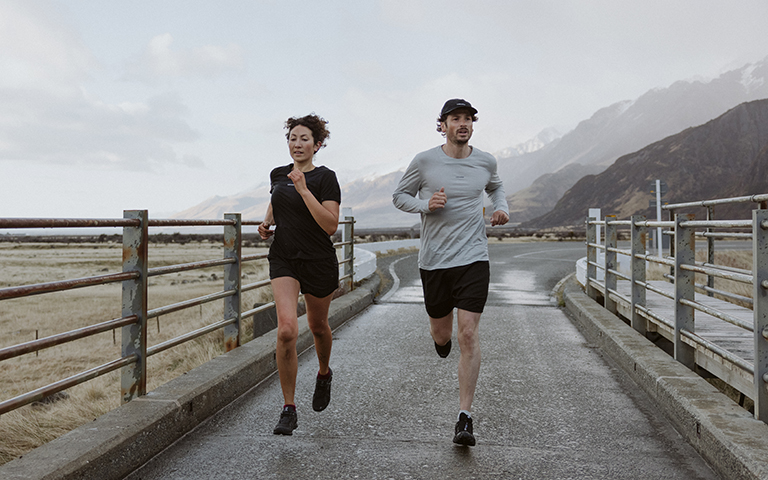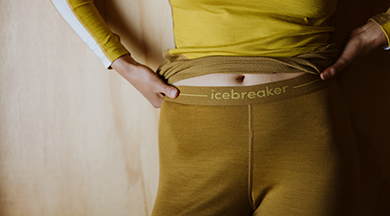How to choose layers for skiing
20 July 2023
Choosing the right clothing layers will keep you warm, comfortable and ready to enjoy your skiing holiday. Planning what to wear for skiing ahead of your trip will help you avoid unnecessary items in your luggage and ensure you’re ready for a great time on and off the slopes.
Whether you’re a seasoned skier or a newbie, our guide covers everything you need to know about what to wear when skiing. We’ve answered the most common questions about clothing for skiing and snowboarding clothing, to help you get ready for your next adventure.
.
What to wear skiing
When choosing what to wear skiing, plan your clothing by thinking about layers. Choose garments that are made from lightweight, breathable fabrics. The aim is to provide warm insulation and move moisture away from the skin quickly when you start to sweat.
Choose your layers by thinking through the following categories:
-
Underwear
Thermal underwear is ideal. Look for fabrics that are lightweight, flexible and soft on the skin.
-
Base layer
The base layer is the next level of clothing above your underwear. It traps air close to the skin, which helps to keep you warm in cold temperatures. Moisture managing fabrics are essential to stop you from becoming hot and wet when working hard on the slopes. Choose a snug fit with flexible fabrics to allow a wide range of motion.
-
Mid layer
Mid layers include fleece jackets and sweaters that can be combined and adapted in response to the conditions. Adding and removing thin layers is more versatile than relying on a single thick coat.
-
Outer layer
A high-quality ski jacket will be water repellent and windproof, protecting you from the elements. Choose effective insulation that doesn’t cause the jacket to become too bulky.
At icebreaker, we specialise in merino wool as a natural fibre that has the ideal combination of insulating and moisture-managing properties. Lightweight and quick drying, merino wool clothing is the perfect match for a skiing holiday. Check out our full snowsports range.
Ski clothing
Use this handy checklist to help you plan ahead:
- Thermal underwear
- Thermal leggings
- Thermal tops
- T-shirt
- Fleece jacket
- Ski trousers (salopettes)
- Ski jacket
- Ski gloves or Mittens
- Ski socks
- Hat and neckwarmer
What to wear under ski pants
Wear leggings or long thermal underwear under your ski pants. Salopettes, or ski trousers, are waterproof and provide insulation, but you need an additional layer underneath. A close-fitting base layer is usually enough, but in extremely cold conditions, you might want to combine this with long johns for additional warmth.
What to wear under ski jackets
Choosing what to wear under your ski jacket depends on the type of jacket and the temperature. A thick, insulating jacket will need fewer layers underneath than a thinner, waterproof coat.
Using the layering system described above allows you to adapt quickly when the weather conditions change. You will start to warm up when skiing and snowboarding, and you may need to remove some of your layers, keeping your coat as a water-resistant barrier to the snow.
What to wear apres ski
Off the slopes, the apres ski scene is as much a part of a winter holiday as time spent on the mountain. When you are packing, choose versatile, comfortable clothing that you’ll enjoy wearing in your downtime. Check our packing list to make sure you don’t forget anything:
- Trousers, leggings, jeans or joggers
- T-shirts, and long-sleeved tops
- Hoodies or sweatshirts
- Trainers
- Gloves
- Scarves
- Hats
-
Swimwear – if your resort has a swimming pool or hot tub
What fabrics are best for skiing?
Lightweight, breathable fabrics are best for skiing, worn in layers to trap air for insulation. While a range of synthetic options exists, at icebreaker, we are passionate about natural, sustainable fibres that combine performance with a positive environmental impact.
Merino wool comes from merino sheep, which thrive during both the cold winters and hot summers of the Southern Alps in New Zealand. Their wool protects the sheep against sub-zero temperatures and remains breathable enough to handle the warm summers. This effective and efficient natural fibre is ideal for creating high-performance activewear that allows you to thrive on your outdoor adventures.
Merino wool clothing is soft and comfortable, lightweight and naturally odour-resistant. Providing insulation in cold weather and breathability when your temperature starts to rise, it’s the ultimate, versatile fabric. Naturally renewable it achieves the benefits of synthetic fibres with a lower impact on the planet.
Hit the piste
Skiing and snowboarding holidays are an exhilarating way to enjoy the mountains in the winter. With proper planning and great gear selection, you can relax with the confidence that you’ve got everything prepared, allowing you to focus on enjoyment.
With twenty-seven years of experience building a responsible, sustainable business, we are as passionate as ever about equipping you for your outdoor adventures. We design snowsports clothing with simplicity and longevity in mind to equip you for skiing seasons for years to come.
More for you

Merino socks for hiking | icebreaker
26 August 2020 | Marie Knowles

The Tech Behind ZoneKnit™ | icebreaker
16 September | Jamie Patterson

Washing Merino Wool Clothes | Does Merino Shrink?
28 September 2020 | Marie Knowles
More for you








